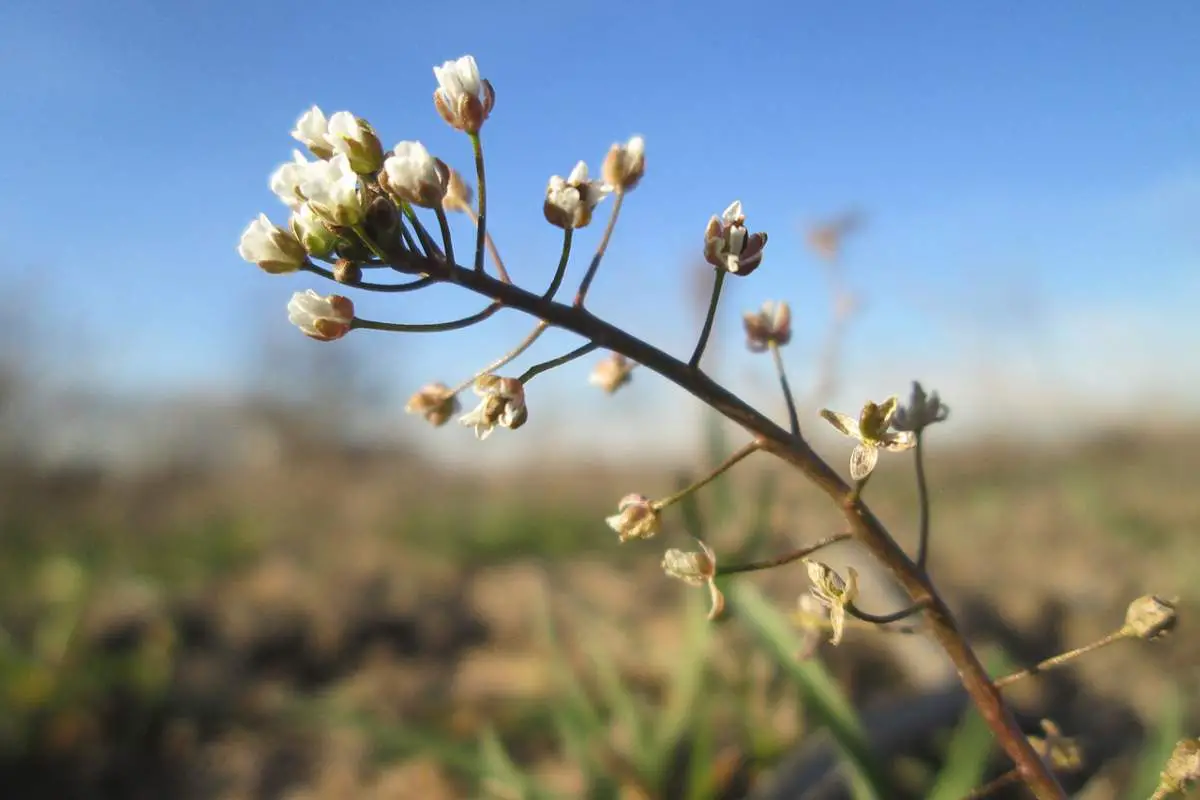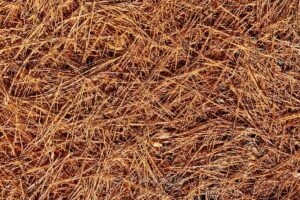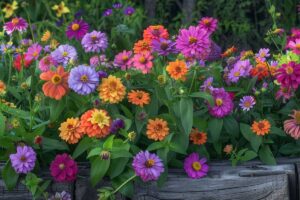This page may contain affiliate links. If you click and buy, we might get a small commission at no cost to you.
South Carolina is home to a wide variety of plants, including unwanted ones like weeds. Weeds that grow in South Carolina thrive best in warm climates with plenty of rain. Weeds are considered to be unwanted plants that interfere with the growth of lawns, crops, or other plants.
They can be divided into two categories: annual and perennial. Annual weeds germinate from seeds each year, drop their seeds, and then die. Perennial weeds do not die and continue returning year after year.
In this article, we list 20 weeds of South Carolina.
20 Weeds in South Carolina
Weeds in South Carolina compete with lawns and crops for nutrients, water, and sunlight. They can become invasive and crowd out native plants. Follow along as we look at 20 of the most common weeds of South Carolina.
1. Spiny Sowthistle

The spiny sowthistle is considered an invasive weed in South Carolina. It’s leaves grow to be 4 to 12 inches long and have prickly edges. The hollow stem can grow up to 5 feet tall and secretes a milky sap when broken.
Spiny sowthistle is a perennial. The flowers are small and yellow. Blooms are 0.5 to 1 inch in diameter.
2. Bull Grass

Also known as Thin Paspalum, Bull grass is a grass-like perennial weed that is an evergreen. It grows in clumping mats and is considered a nuisance because of its unattractive clumps.
Bull grass thrives in areas with poor drainage. It is common in pastures, hayfields, and roadside ditches in South Carolina.
3. Shepherd’s Purse
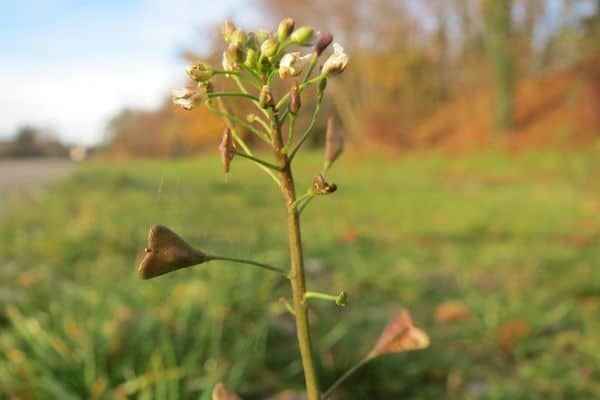
Shepherd’s purse is a broadleaf annual weed that is common in coastal regions of the United States, and it grows in South Carolina. They are often found in soils with poor nutrients.
Shepherd’s purse is actually a member of the mustard family. It gets its name from the flat triangle-shaped fruits that look like a purse.
4. Dandelion
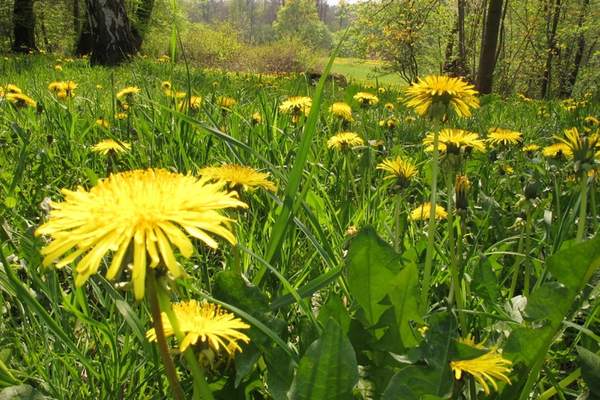
Dandelions are a common weed that pops up just about everywhere in the United States. They also have medicinal properties.
Dandelions can grow up to 24 inches tall and spread their feathery sails on the seed that blows in the wind. These plants are well known for their long stems and bright yellow flowers with many tufts of feathery blooms.
5. Shiny Cudweed
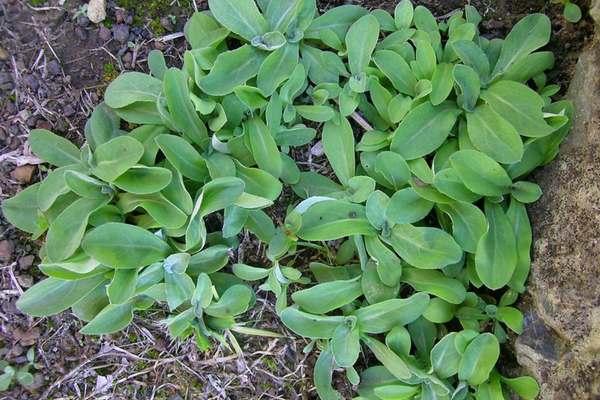
Shiny cudweed is also sometimes called rabbit tobacco. It’s a common weed in South Carolina that grows around 8 to 20 inches tall.
This annual weed has glossy leaves on the top side and hairy on the bottom. The basal leaves grow in a rosette pattern.
6. Yellow Nutsedge
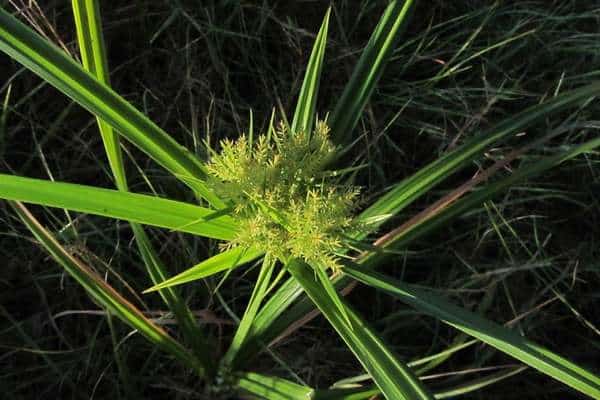
Yellow nutsedge is a warm-season, perennial sedge. It is one of the most difficult weeds to control in South Carolina.
This weed can reach up to 3 feet in height. The leaves are yellow-green in color and have a waxy surface. Yellow nutsedge is often mistaken for a grass because of its appearance.
7. Swinecress

Swinecress is an annual weed in the mustard family that grows low to the ground. It’s found all over the world and is very common in South Carolina.
Stems spread along the ground and can grow up to 20 inches long. Tiny white flowers with four petals bloom along the running stem where leaves grow.
8. Violet
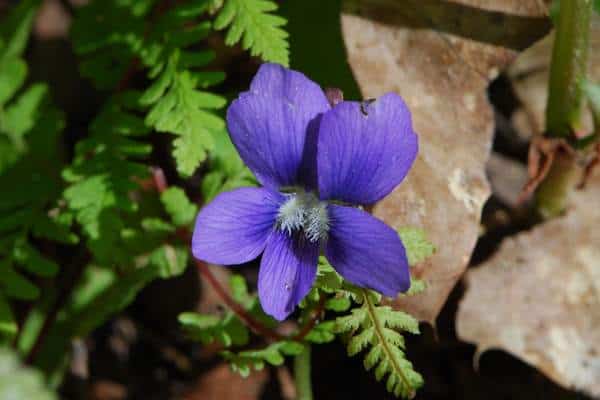
Violets are small common weeds in South Carolina lawns and gardens. There are many different species of violets, but the most common in the state is the common blue violet that is native to North America.
Violets are low-growing perennial weeds with heart-shaped leaves. They have a purple flower that gives them their name.
9. Virginia Buttonweed
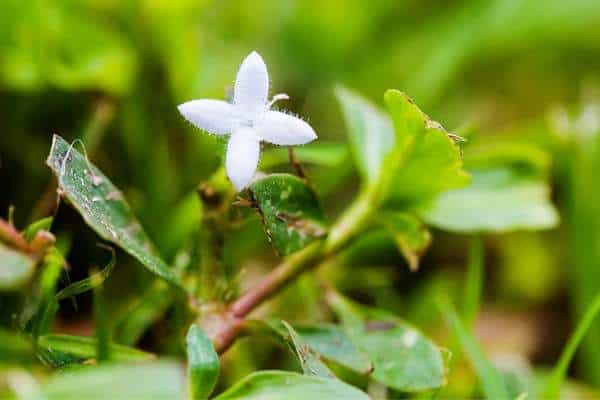
Virginia buttonweed grows in mats in areas with poor drainage. It’s found throughout the southern United States.
The leaves are pointed and tapered. This perennial weed has tiny white flowers with four petals.
10. Dallisgrass
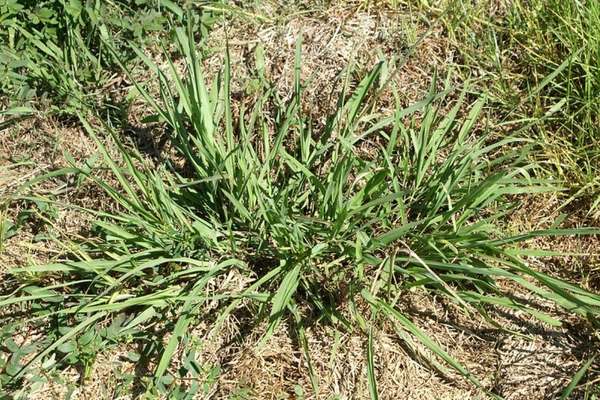
Also known as Dallas grass, this is an invasive weed native to South America. It’s a clumping perennial weed that came to the United States in the 1800s.
Mats of dallisgrass can grow to over 3 feet tall. The dense clumps continue expanding outward if left unchecked.
11. Crabgrass

Crabgrass is one of the most common annual weeds in South Carolina. It’s a coarse clumping grass that is difficult to get rid of once it becomes established.
The spreading stems resemble crab legs which is where it gets its name. It’s found in warmer regions and spreads most in spring and summer.
12. Southern Sandspur
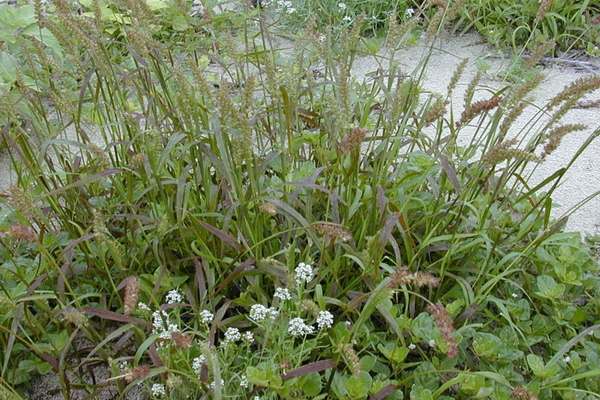
Southern sandspur or sandbur has one of the most painful seeds of all the weeds on the list. This annual weed produces seeds incased in a spiny bur with sharp barbs.
These barbs cling to everything from clothes to animal fur to skin. They are annoying and a major nuisance to southern lawns. They’re often found in areas with more sand.
13. Foxtail
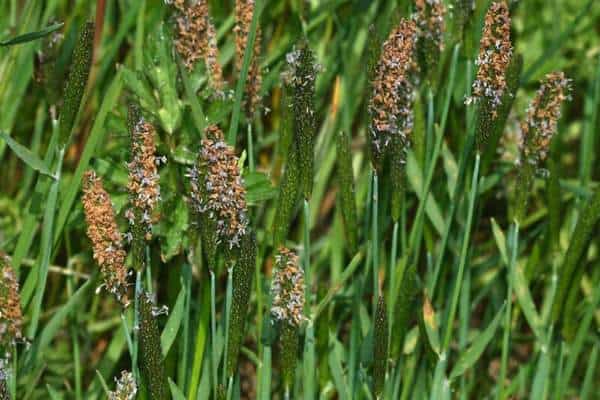
Foxtail is an annual weed that can be yellow or green. It gets its name from the fuzzy seed clusters on the tips of stems.
Foxtail grows in clumps. It spreads rapidly because it produces so many seeds that can easily scatter through the wind.
14. Annual Sedge
Annual sedge has a triangular-shaped stem that grows up to 2.5 feet tall. This grass grows in a single stem as opposed to clumping.
Annual sedge has tiny flowers that look like little spikes around the top. The seeds are little spikelets that spread rapidly in dry soil conditions.
15. Doveweed

Doveweed is annual weed that is highly invasive. It grows along the ground and stems creep to spread all over a lawn. It especially thrives in moist soil with poor drainage.
Doveweed has a tiny three-petaled flower that is light purple or lavender in color. The leaves are thick and grow to be about 4 inches long.
16. Goosegrass
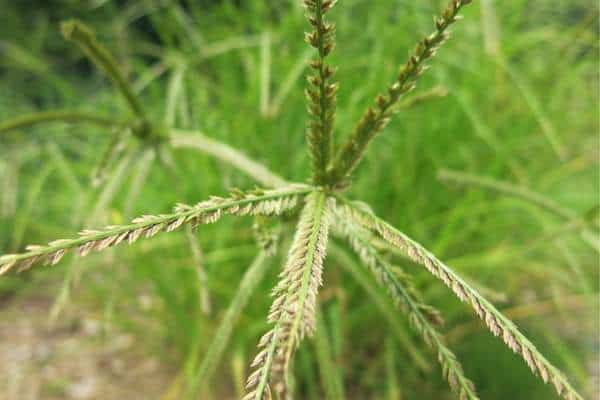
Goosegrass is also known as crowfootgrass. It gets its name from the 3 to 5 seed heads that look like a crow’s foot. This is a low-growing annual grass found all over South Carolina.
Goosegrass thrives in areas that have high traffic and the soil is packed down. It’s not unusual to find goosegrass growing alongside crabgrass.
17. Torpedograss
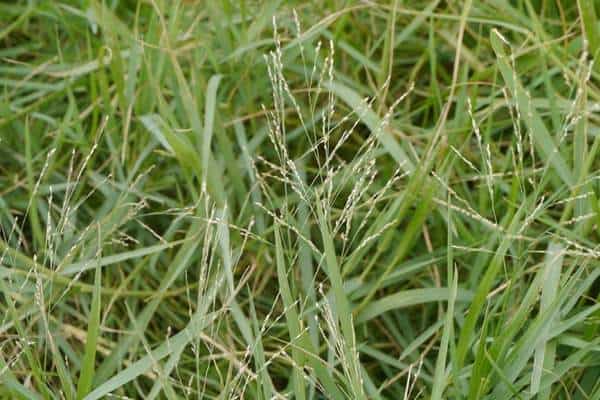
Torpedograss is a perennial weed whose name is derived from the pointed shaped leaves that look like torpedos. This weed is not native to North America, and comes from Asia and Africa.
Torpedograss is a creeping grass, and shoots can grow up to 40 inches long. It spreads easily and rapidly through seed spread if not controlled.
18. Yellow Woodsorrel
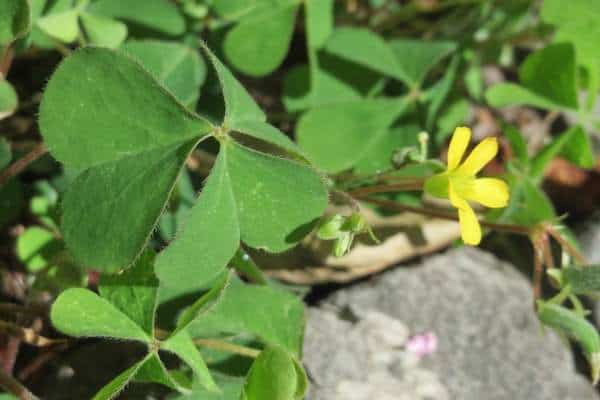
Also known as oxalis, yellow woodsorrel is a highly invasive weed that can grow in just about any conditions. It can be a deep green or purple-red color.
This clover-looking weed grows low to the ground and has 3 heart-shaped leaves that grow in a cluster off the stem. The blooms are small 5-petaled yellow flowers.
19. Alexandergrass
Alexandergrass is also called creeping signalgrass. It is an annual weed dies every fall and winter in South Carolina.
The seeds can spread rapidly from Alexandergrass. However, it also creeps along the ground making it especially stubborn to get rid of.
20. Common Chickweed
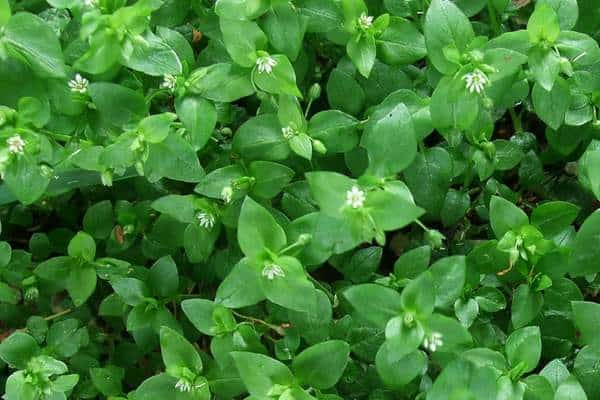
Common chickweed is an annual weed that grows all over South Carolina. It can be a nuisance in gardens because it competes for nutrients.
Chickweed gets its name because chickens love to eat it. It’s small white flowers also attract bees, butterflies, and birds.
